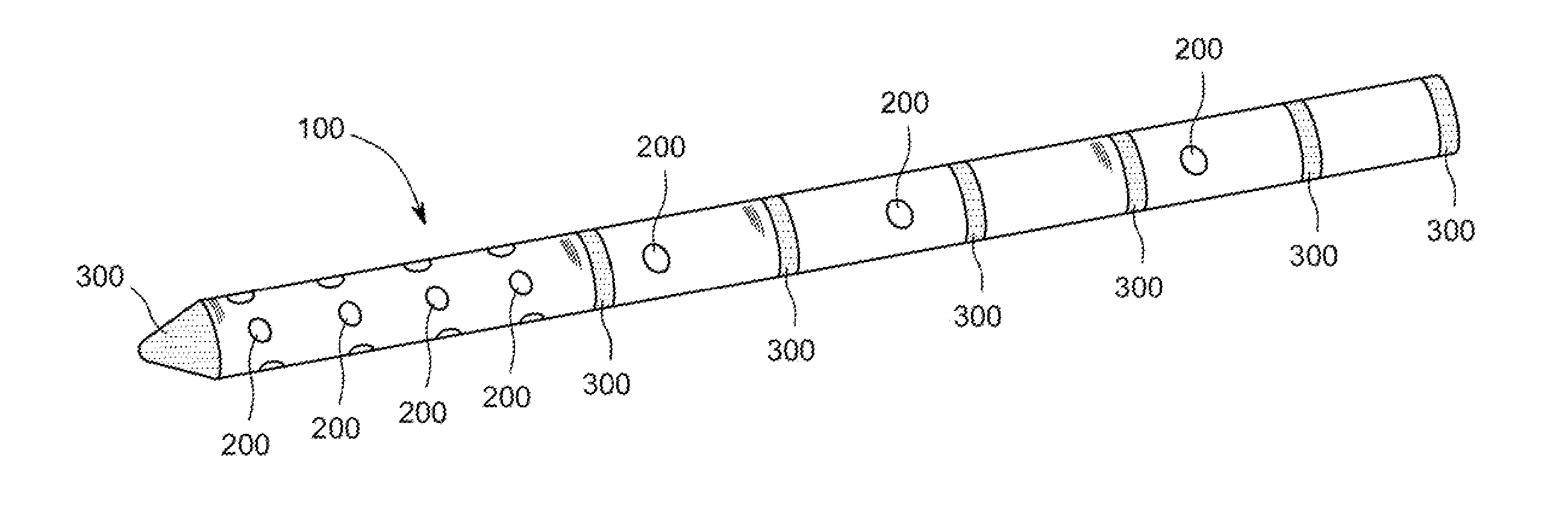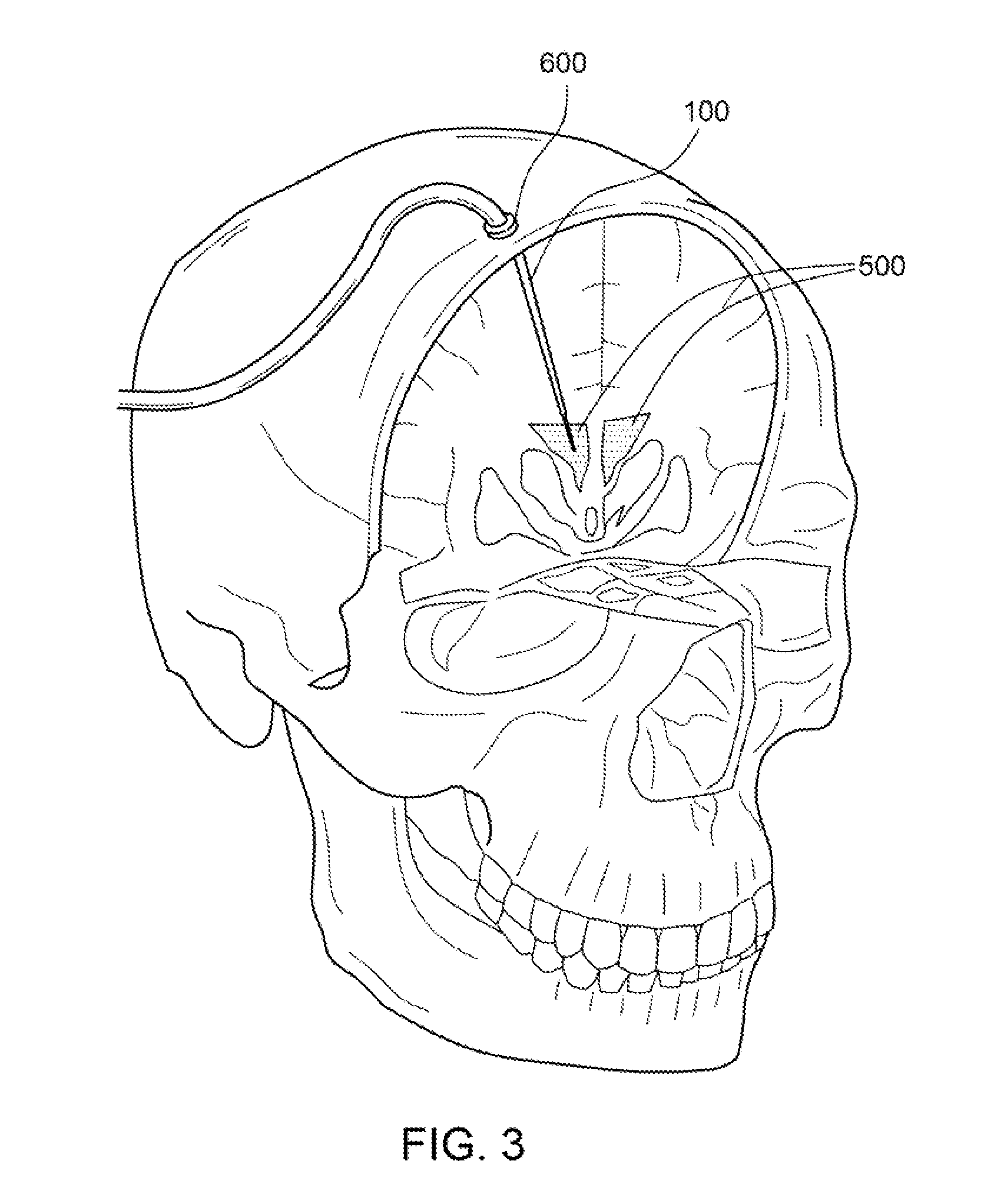Cerebrospinal Fluid Cooling Device
a cooling device and cerebrospinal fluid technology, applied in the field of cerebrospinal fluid cooling devices, can solve the problems of increased susceptibility to infection, increased risk of brain injury, brain injury, etc., and achieves the effects of preventing neuronal injury, less risk of damage to the human body, and greater cooling
- Summary
- Abstract
- Description
- Claims
- Application Information
AI Technical Summary
Benefits of technology
Problems solved by technology
Method used
Image
Examples
Embodiment Construction
[0015]With reference to FIG. 1, the preferred embodiment of the present invention comprises a drainage catheter 100, which is commonly used to regulate pressure within the brain during treatment for brain and spinal cord injuries. The drainage catheter 100 is typically inserted into lateral ventrical 500 of the brain, as depicted in FIG. 3, and may comprise any combination of known monitoring sensors, such as pressure transducer, oxygen monitor, and temperature gauge. As pressure builds, CSF enters catheter 100 through openings 200 and flows out of the skull.
[0016]The present invention comprises a solid thermally conductive material 300 that is operable to reduce CSF temperature. The thermally conductive material is biocompatible, i.e. a material that elicits minimal response from the body. Thermally conductive and biocompatible materials including metals such as tungsten and titanium, and carbon-based materials such as thermal diamond paste or diamond coating, are contemplated. Pre...
PUM
 Login to View More
Login to View More Abstract
Description
Claims
Application Information
 Login to View More
Login to View More - R&D
- Intellectual Property
- Life Sciences
- Materials
- Tech Scout
- Unparalleled Data Quality
- Higher Quality Content
- 60% Fewer Hallucinations
Browse by: Latest US Patents, China's latest patents, Technical Efficacy Thesaurus, Application Domain, Technology Topic, Popular Technical Reports.
© 2025 PatSnap. All rights reserved.Legal|Privacy policy|Modern Slavery Act Transparency Statement|Sitemap|About US| Contact US: help@patsnap.com



